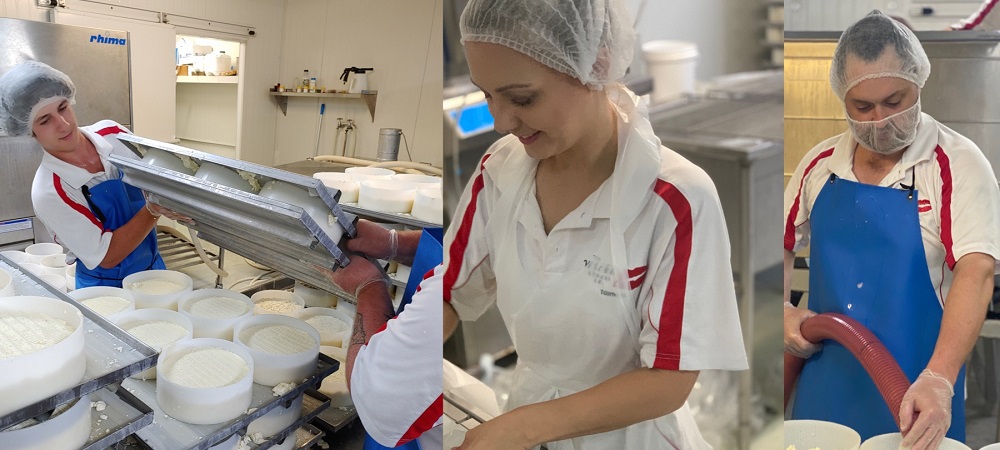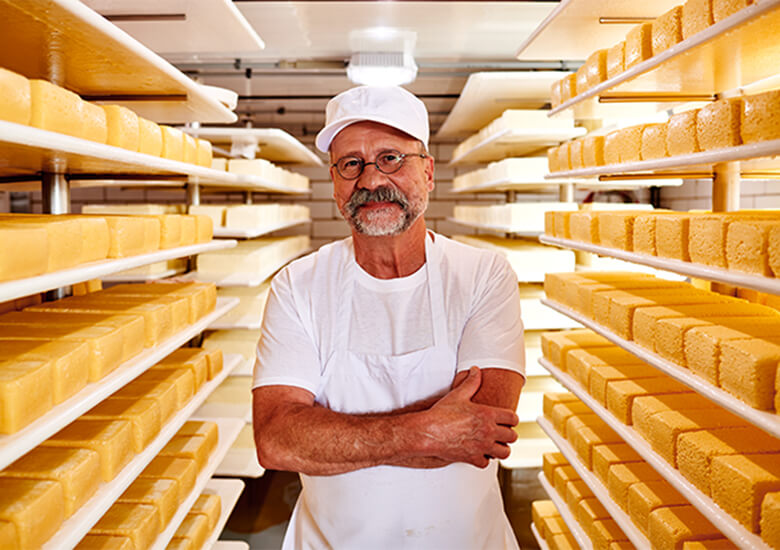Discover the Art of Floridia Cheese: A Guide to Cheese Makers Melbourne
Discover the Art of Floridia Cheese: A Guide to Cheese Makers Melbourne
Blog Article
Unlocking the Tricks of Artisanal Cheese Making: A Step-by-Step DIY Overview
In the realm of culinary craftsmanship, artisanal cheese making stands as a testimony to the fragile equilibrium in between practice and technology. Each action in the procedure, from choosing the ideal milk to improving aging methods, holds within it a wealth of understanding gave through generations. As we start this journey to debunk the art of creating elegant cheeses, we are confronted with a tapestry of skills and tricks waiting to be unwinded. Join us as we discover the details of this ancient craft, where scientific research, art, and perseverance merge to produce flavors that entice the detects.
Selecting the Right Milk
When beginning on the journey of artisanal cheese production, the choice of milk plays an essential function in identifying the high quality and features of the final item. The kind of milk selected affects the taste, structure, and on the whole account of the cheese.
When selecting milk for cheese making, it is necessary to consider the fat content. Greater fat web content in milk can cause a creamier and richer cheese, while lower fat material may result in a drier and stronger structure. Furthermore, the source of the milk, whether from cows, goats, sheep, or buffalo, adds unique flavors and qualities to the cheese (Melbourne Made Cheese). Each sort of milk brings its own subtleties, allowing for a vast array of cheese ranges to be crafted based on the selected milk. Ultimately, the selection of milk is an essential choice that establishes the foundation for a successful artisanal cheese-making endeavor.
Culturing and Coagulating
To initiate the cheese-making process, the critical steps of culturing and coagulating should be thoroughly performed to transform milk into curds and whey. The kind of culture used can dramatically affect the flavor, appearance, and ripening of the last cheese item.

The timing and temperature level control throughout culturing and coagulation are vital elements that influence the final outcome of celebrity. Appropriate execution of these steps is vital to guarantee the wanted texture, flavor, and consistency of the artisanal cheese being created.
Draining and Pressing Curds
After the milk proteins have coagulated and the curds have actually been cut to launch whey, the next critical step in artisanal cheese making entails draining and pressing the curds to attain the wanted structure and uniformity of the last cheese item. Draining is the process of separating the curds from the whey. This can be done by transferring the curds into a cheesecloth-lined colander or mold and mildew and permitting the whey to drain off normally. The moment for draining pipes can differ relying on the sort of cheese being made and the preferred moisture content.
As soon as the curds have actually completely drained, the next step is pushing. Pushing aids get rid of any remaining whey and compacts the curds to form a solid cheese wheel. Pressing can be done using specialized cheese presses that use regular and gentle pressure over a period of time. The period and stress used during pushing will certainly influence the last structure of celebrity, from creamy and soft to hard and company. Proper pressing and draining are crucial steps that substantially impact the high quality and characteristics of the artisanal cheese being generated.
Aging and Flavor Methods
Implementing precise aging and flavoring techniques is essential in enhancing the deepness and complexity of artisanal cheeses, raising their preference accounts to splendid degrees of refinement and refinement. Aging plays an essential function in establishing the one-of-a-kind flavors and appearances that distinguish artisanal cheeses. During the aging procedure, cheeses are kept in meticulously regulated environments where factors such as moisture, air movement, and temperature level are controlled to motivate the development of advantageous mold and mildews and microorganisms. This controlled setting allows celebrity to grow gradually, developing complex scents and abundant tastes.
Flavoring methods also add dramatically to the last taste of artisanal cheeses. Cheesemakers may choose to present added flavors by including active ingredients such as natural herbs, flavors, or even fruits right into the cheese during the production procedure. In addition, some cheeses are cleaned or scrubed with various liquids, such as brine or alcohol, to improve their textures and tastes.
Covering and Keeping Cheeses

Verdict
To conclude, grasping the art of artisanal cheese making includes thoroughly selecting the best milk, following precise culturing and coagulating processes, draining and pushing curds effectively, and using various aging and flavoring strategies. By adhering to these actions faithfully and with interest to information, you can develop your own delicious and special cheeses in the house. Keep in mind to wrap and keep your cheeses correctly to make sure ideal flavor and structure growth. Delighted cheese making!
Each article source type of milk brings its very own subtleties, permitting for a broad variety of cheese varieties to be crafted based on the picked milk.After the milk proteins have coagulated and the curds have been reduced to release whey, the following essential step in artisanal cheese making entails draining and pressing the curds to attain the wanted structure and consistency of the final cheese product. The majority of cheeses need to be wrapped in wax paper or cheese paper to enable them to Our site breathe while securing them from drying out. For cheeses that need to proceed aging, such as bloomy peels or washed rinds, ensure they are saved in a trendy atmosphere like a cheese cave or a refrigerator set to the suitable temperature level. By paying focus to the covering and storage of artisanal cheeses, cheese makers and enthusiasts can protect the integrity of these specials and totally enjoy their intricate flavors.
Report this page